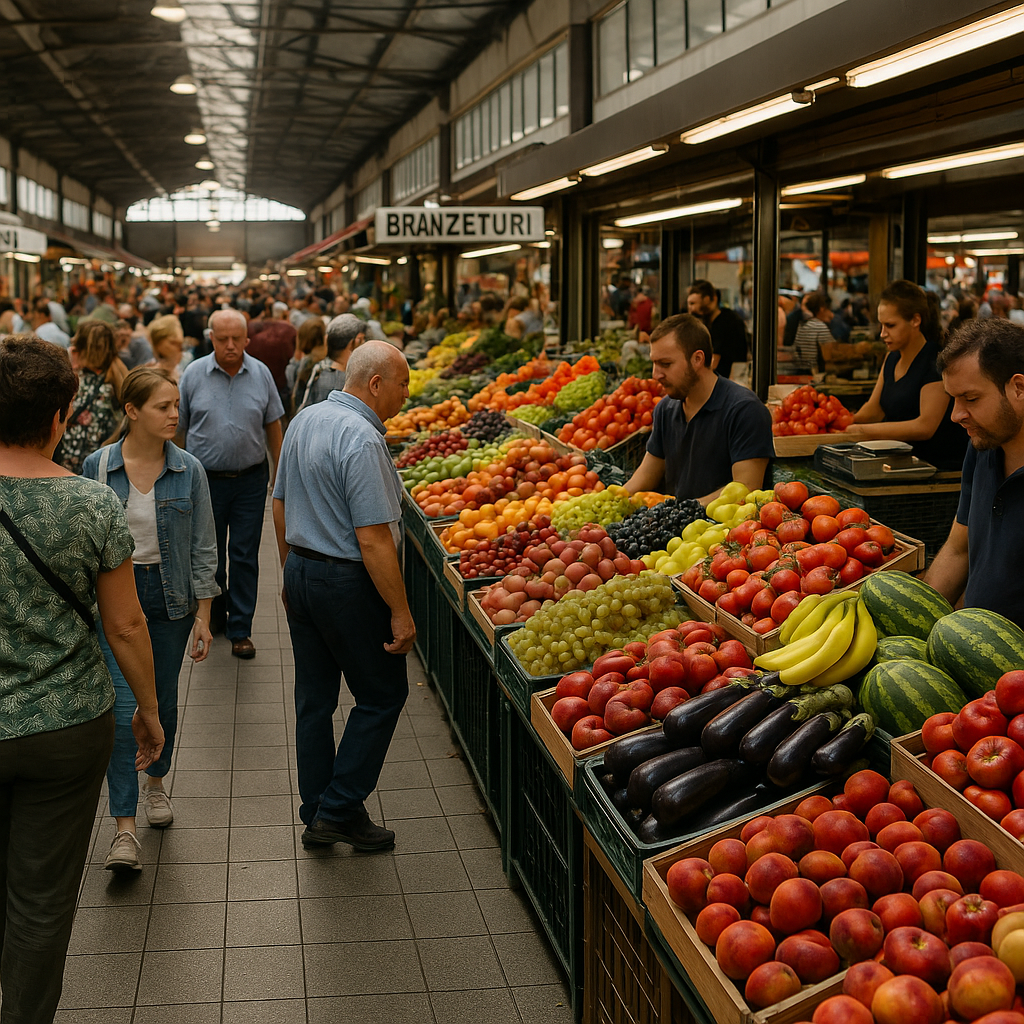How traditional food markets support sustainable city tourism and reduce carbon footprints
Obor Market draws a broad mix of domestic and international tourists. While Romanian visitors typically value the market for its affordability and familiarity, foreign tourists, especially younger travelers, are attracted by its street food culture, vibrant atmosphere, and immersive local experiences. These interactions offer visitors authentic connections to local heritage, while also fostering intercultural exchanges that enhance the social value of the market.

Urban food markets are rapidly gaining prominence as pivotal spaces where local identity, sustainability, and tourism intersect. Once viewed primarily as centers of commerce, these public marketplaces are now being recognized for their potential to advance cultural preservation, stimulate green tourism, and support local economies. A new study spotlights one such market in Eastern Europe, highlighting the broader implications for urban tourism policy and planning.
Titled “The Role of Food Markets in Urban Sustainable Tourism: A Case Study from Bucharest (Romania)” and published in Sustainability, the research was led by Iuliana Vijulie, Gabriel Vânău, Mihaela Preda, and Ana Maria Taloș of the University of Bucharest. The authors analyse Obor Market, Romania’s largest traditional food market, to understand how such spaces can serve as sustainable tourism infrastructure and instruments of cultural continuity in rapidly globalizing urban contexts.
What role do food markets play in urban tourism?
According to the study, Obor Market is not simply a commercial venue, but a deeply embedded cultural space that connects visitors with Bucharest’s traditions, gastronomy, and everyday life. By analyzing visitor demographics, motivations, and satisfaction, the researchers demonstrate that food markets have evolved into multifunctional platforms that serve tourists, vendors, and local communities alike.
Obor Market draws a broad mix of domestic and international tourists. While Romanian visitors typically value the market for its affordability and familiarity, foreign tourists, especially younger travelers, are attracted by its street food culture, vibrant atmosphere, and immersive local experiences. These interactions offer visitors authentic connections to local heritage, while also fostering intercultural exchanges that enhance the social value of the market.
The market’s appeal, the authors argue, lies in its hybrid identity: it is simultaneously a space of tradition and a contemporary urban attraction. It supports culinary exploration, offers low-cost access to fresh and local products, and allows tourists to experience Bucharest beyond its formal heritage sites. This positions markets like Obor as natural allies in city-led efforts to diversify urban tourism.
How do markets support environmental and economic sustainability?
In addition to culture and tourism, the study finds that Obor Market plays a significant role in advancing sustainability across multiple fronts. First, it reduces environmental impact by promoting short supply chains and sourcing products from local and regional producers. This minimizes transport emissions and strengthens local food systems - key goals in urban sustainability planning.
Second, it offers a platform for small-scale entrepreneurs, farmers, and informal vendors to remain economically viable amid increasing market competition and urban redevelopment pressures. By doing so, markets help retain the socioeconomic fabric of neighborhoods and prevent the homogenization of city spaces.
The researchers emphasize that the presence of green food options, reduced packaging practices, and strong community support networks embedded in the market’s operations contribute to its environmental credentials. Furthermore, the local economic activity generated by the market supports both job creation and circular consumption patterns, contributing to resilient urban economies.
Importantly, the market also functions as a space of social cohesion, where diverse groups, including migrants, elderly residents, and tourists, interact in inclusive and low-cost settings. This aligns with broader goals of sustainable urban development that prioritize accessibility, equity, and participation.
What are the gaps in policy and promotion?
Despite its evident strengths, the study identifies critical gaps in how urban food markets are integrated into tourism and cultural policy frameworks. In the case of Obor Market, promotional strategies remain underdeveloped. Local authorities have yet to fully capitalize on the market’s potential as a tourism brand, limiting its visibility on city tourism maps and digital platforms.
The research highlights the absence of structured partnerships between market stakeholders, tourism boards, and cultural agencies. Without coordinated strategies, markets risk being left out of urban innovation agendas and sustainability plans. The authors advocate for the adoption of data-informed cultural policies that include urban markets as strategic assets, not peripheral actors.
Additionally, while the study acknowledges the market’s resilience during recent crises, such as the COVID-19 pandemic, it notes that stronger institutional support and investment are needed to future-proof these spaces. Recommendations include improved accessibility, better urban design, multilingual signage, and digitized promotional campaigns aimed at younger global travelers.
The paper urges urban policymakers to recognize food markets as living systems and not passive heritage sites. Their dynamic blend of economic activity, cultural memory, and tourism potential can help cities meet sustainability goals while enriching the visitor experience.
- READ MORE ON:
- how traditional food markets support sustainable city tourism
- role of local markets in cultural tourism development
- promoting urban food systems through tourism
- urban market tourism
- social sustainability in tourism
- tourism and local economies
- Obor Market Bucharest
- urban tourism development
- FIRST PUBLISHED IN:
- Devdiscourse










